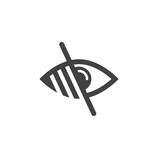Types of devicesThere is a range of devices that may help increase independence and allow you to continue to do everyday activities. Prices vary, and not everyone needs every device. Your insurance company may pay some or all of the cost for a device, depending on your specific coverage. Consider some of the device options below. Text to voice devices: There is a range of different text-to-voice devices on the market. These devices recognize text from phones, books, and computer monitors. Even some medical devices, such as a blood pressure monitor, are available in text to voice. This type of device is good for people that have very low vision and a magnifier may not be sufficient. Portable electronic magnifiers: Portable magnifiers are electronic devices that look similar to a lightweight tablet. You hold the device in front of a book or newspaper and it appears magnified on the screen. This may be a good option for people that prefer to read instead of using text to voice devices. Magnifying spectacles: Magnifying spectacles are used like glasses, so they keep your hands free and are portable. They are used mostly for reading. This may be a good option for people that are still working and need to use a magnifier often. Stand magnifiers: A stand magnifier is placed above the object you are looking at, such as a book. A stand magnifier may be best for someone that uses a certain desk often and wants to have a magnifying lens at the right distance without moving it. Low vision tipsIn addition to getting some of the low vision devices above, consider the following tips:
Talk with an eye doctor: See an eye doctor to determine the cause of vision loss and if there are options to slow down the progression. Consider vision rehab: Vision rehabilitation programs help you develop strategies to maximize your sight. While vision rehab cannot correct diseases that affect vision, these programs can help you learn ways to utilize the vision you have to the maximum extent. Vision rehabilitation programs also help introduce you to low vision devices, help you decide what devices might be your best option, and train you on their use. Don’t forget low-tech strategies: There are also other types of tools to help deal with low vision. There are many types of inexpensive, low-tech devices to choose from. For instance, large-printed books, such as cookbooks, can be helpful. Also, consider simple strategies, such as using color-coded pillboxes or wallets that have different pockets for different dollar denominations to assist with daily activities. Use large-numbered clocks and watches or talking kitchen devices to make cooking easier. Good lighting is key: If you have low vision, making sure lighting is optimal in your home is vital. For instance, replace light bulbs with higher-watt bulbs. Add more lighting in areas where natural light is low. Be sure to also adjust lights to reduce glare. We hope the information above was helpful. If you have any questions on low vision tools or how to deal with low vision, we are happy to try to help. Also, if you would like to ask whether an appointment with one of our eye doctors would be appropriate at this time, call our office at 508-746-8600. Comments are closed.
|
EYE HEALTH BLOGCategories
All
Archives
July 2024
|
|
Kadrmas Eye Care New England
55 Commerce Way, Plymouth, MA 02360
14 Tobey Road, Wareham, MA 02571 133 Falmouth Road (Rt 28), Mashpee, MA 02649 |
Phone Number:
1-508-746-8600 Hours: Monday through Friday — 8 AM – 4:30 PM |


 RSS Feed
RSS Feed
